#VTOL UAV
Explore tagged Tumblr posts
Text
A Strategic Alliance: High Eye and Dutch Navy Partner on Advanced UAV Deployment
The world of maritime operations is on the cusp of a technological revolution, and Dutch unmanned aerial vehicle (UAV) specialist High Eye is at the forefront. In a recent announcement, High Eye secured a landmark contract with the Royal Netherlands Navy for its innovative Airboxer VTOL (Vertical Take-Off and Landing) UAV. This strategic partnership signifies a significant leap forward in the Dutch Navy's capabilities and paves the way for advancements in maritime security and reconnaissance.
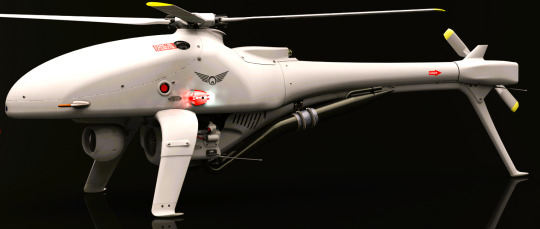
Airboxer: A Game-Changer for Maritime UAV Operations
The High Eye Airboxer is not your average drone. Developed over a decade with meticulous attention to detail, the Airboxer boasts a unique combination of features that make it ideally suited for the demanding maritime environment. Unlike conventional fixed-wing UAVs that require runways, the Airboxer's VTOL capabilities allow for take-off and landing from even the most space-constrained environments, such as naval ships. This agility offers the Dutch Navy unparalleled flexibility in deploying the Airboxer for various missions.
The Airboxer's strengths extend beyond its launch and recovery system. The UAV is designed to carry a payload capacity of up to 7 kilograms, allowing for the integration of a diverse range of sensors and other mission-critical equipment. Imagine the Airboxer soaring over the seas, equipped with high-resolution cameras for surveillance, or sophisticated radar systems for threat detection. This adaptability makes the Airboxer a valuable asset for various missions, including:
Enhanced Situational Awareness: The Airboxer can provide real-time visual data on surrounding areas, extending the reach of naval vessels and keeping crew informed of potential threats or targets.
Search and Rescue: The UAV's ability to cover vast distances quickly makes it ideal for locating missing vessels or personnel in distress.
Maritime Security: Equipped with the right sensors, the Airboxer can be used to patrol designated zones, deter illegal activities, and identify potential threats before they escalate.
#High Eye Airboxer#drone#drones uav#military aircraft#military technology#dutch navy#VTOL UAV#Maritime UAV Operations#Maritime Security#Search and Rescue#Defense Sector#UAV Technology#Strategic Partnership
1 note
·
View note
Photo
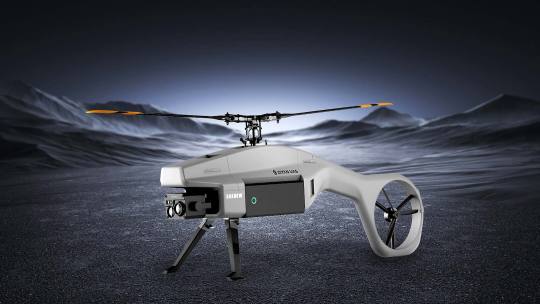
Ziyan Shadow S3 Unmanned Aerial Vehicle Looks Like A Vehicle Straight Out Of The Future
So sci-fi-ish!
Follow us for more Tech Culture and Lifestyle Stuff.
3 notes
·
View notes
Text

Drones rely on gyroscopes, other sensors and systems to navigate in the air and maintain stable flight. Multiple sensors work together to enable drones to hover, accelerate and accurately change direction.
Three-axis gyroscopes measure angular velocity to determine the motion state of an object, also known as motion sensors. Drones need to rely on the gyroscope's angular velocity measurement capability to form a closed-loop control with the flight control system.
ER-3MG-043 is a three-axis gyroscope that collects real-time angular velocity data of the drone in three axes: pitch, roll and yaw.
It supports OEM customized development, has sufficient internal space, and is highly expandable. It supports OEM customized development, has ample internal space, and is highly expandable. It can be equipped with other sensors (such as accelerometers, barometers, and magnetometers) to greatly save device space, making it suitable for volume-sensitive scenarios.
#cars#drone#uav#vtol#robots#murder drones#murder drone fanart#rubber drone#electronic#industrial#drone photography#robot art#robotics#robot
0 notes
Text
https://heyjinni.com/read-blog/225672_hybrid-flight-power-growth-of-the-fixed-wing-vtol-uav-sector.html
#Fixed-wing VTOL UAV Market Scope#Fixed-wing VTOL UAV Market Growth#Fixed-wing VTOL UAV Market Trends
0 notes
Text
According to the report "Fixed-wing VTOL UAV Market by Application (Military, Government & Law Enforcement, Commercial), Propulsion (Electric, Hybrid, Gasoline), Mode of operation (VLOS, EVLOS, BVLOS), Endurance, Range, MTOW and Region - Global Forecast to 2030
0 notes
Text
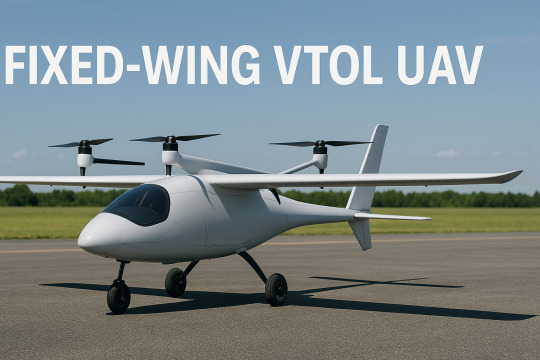
What’s Driving the Fixed-Wing VTOL UAV Market? Industry Forecast to 2030
The Global Fixed Wing VTOL UAV Market Size was valued at USD 842 million in 2022 and is estimated to reach USD 4,627 million by 2030, growing at a CAGR of 23.7% during the forecast period. The rise in the adoption of technologically advanced runwayless unmanned aerial military platforms by defense forces is one of the most significant factors projected to drive the growth of the Fixed-wing VTOL UAV Industry. The increasing adoption of fixed-wing VTOL UAVs in various commercial applications, such as monitoring, surveying & mapping, agriculture, aerial remote sensing, and product delivery, is also contributing to the growth of the market.
#Fixed Wing VTOL UAV#Fixed Wing VTOL UAV Market#Fixed Wing VTOL UAV Industry#Global Fixed Wing VTOL UAV Market#Fixed Wing VTOL UAV Market Companies#Fixed Wing VTOL UAV Market Size#Fixed Wing VTOL UAV Market Share#Fixed Wing VTOL UAV Market Growth#Fixed Wing VTOL UAV Market Statistics
0 notes
Text
Chilean Police Force acquires Schiebel's Camcopter S-100 for security operations
Chilean Police Force acquires Schiebel's Camcopter S-100 for security operations #India #Austria #Chile #defence #defense #defencenews #police #drone #vtol #schiebel #camcopters100 #science #engineering #drones #UAVs #innovation
Chilean National Police picks Schiebel’s Camcopter S-100 UAV for security operations: Santiago, Chile – Carabineros de Chile, the Chilean national police force, has recently acquired an advanced unmanned air system (UAS) to bolster its security operations in the challenging Araucanía region. This strategic move positions Chile as a pioneer in law enforcement drone technology within Latin…
#Camcopter S-100 VTOL#Carabineros de Chile#Chilean National Police Force#Drone#Schiebel Camcopter S-100#UAV
0 notes
Text
VTOL UAV Market: Projected to Hit USD 10.0 Billion by 2032

Vertical Take-off and Landing (VTOL) UAV Market Outlook
The Vertical Take-off and Landing (VTOL) UAV Market is witnessing an unprecedented surge, cementing its role as a critical segment of the global unmanned aerial vehicle (UAV) industry. With a market size valued at USD 1.652 billion in 2023, this sector is projected to skyrocket to USD 10.0 billion by 2032, demonstrating a staggering compound annual growth rate (CAGR) of 21.96% from 2024 to 2032. Driven by an expanding range of applications, favorable government policies, and technological advancements, VTOL UAVs are transforming operations in military, commercial, and consumer markets.
Browse Report – Explore the report’s contents, sections, and key insights by browsing through its detailed information.
Understanding the VTOL UAV Market
VTOL UAVs possess the unique capability to take off, hover, and land vertically, eliminating the need for runways. This versatility makes them ideal for use in diverse environments, from dense urban landscapes to remote and rugged terrains. VTOL UAVs are often categorized into fixed-wing, rotary-wing, and hybrid models, each catering to specific use cases across industries. These systems are increasingly sought after due to their ability to combine the benefits of traditional drones and helicopters, offering improved operational efficiency, precision, and maneuverability.
Key Drivers of Market Growth
The exponential growth of the VTOL UAV market is fueled by several key factors:
Increasing Adoption Across Military and Defense Sectors
Military applications remain the largest driver of VTOL UAV demand. Governments worldwide are investing heavily in UAV technologies for surveillance, reconnaissance, intelligence gathering, and combat operations. VTOL UAVs, with their ability to operate in confined and unpredictable environments, are invaluable for modern warfare strategies. For instance, they can be deployed for border patrols, target tracking, and delivering supplies to troops stationed in inaccessible areas. The growing focus on minimizing human casualties and enhancing operational capabilities further accelerates their adoption.
Expanding Commercial Applications
The commercial sector is witnessing significant VTOL UAV integration across industries such as logistics, agriculture, energy, and infrastructure. E-commerce giants and logistics providers are actively exploring VTOL UAVs for last-mile delivery services, reducing delivery times and costs. In precision agriculture, these UAVs are used for crop monitoring, spraying fertilizers, and assessing field health, improving productivity and efficiency for farmers. Similarly, industries like oil and gas rely on VTOL UAVs for pipeline inspections, minimizing downtime and ensuring worker safety.
Technological Advancements
Rapid advancements in UAV technology, including improved battery life, autonomous flight capabilities, and enhanced payload capacities, have bolstered the growth of VTOL UAVs. Hybrid VTOL models that combine fixed-wing and rotary-wing features offer extended flight ranges and longer operational hours, making them ideal for applications requiring both vertical take-off and long-distance travel. Additionally, innovations in artificial intelligence (AI) and machine learning are enabling smarter, data-driven operations, enhancing UAV performance across applications.
Favorable Government Policies and Regulations
Governments globally are recognizing the potential of UAVs and implementing favorable policies to support their development and deployment. Streamlined licensing procedures, relaxed airspace restrictions, and funding for UAV research and innovation are creating a conducive environment for market growth. In regions like North America and Europe, regulatory bodies are collaborating with UAV manufacturers to establish clear guidelines for commercial UAV operations, further boosting adoption.
Market Segmentation and Regional Insights
The VTOL UAV market can be segmented based on type, application, and region:
By Type: The market includes fixed-wing, rotary-wing, and hybrid VTOL UAVs. Hybrid models are expected to witness the highest growth due to their versatile applications and operational advantages.
By Application: Key application areas include military and defense, logistics, agriculture, energy, construction, and media.
By Region: North America dominates the market, driven by significant defense spending, technological advancements, and strong support for commercial UAV applications. Europe and Asia-Pacific are also emerging as major players, with increasing investments in UAV infrastructure and applications across industries like agriculture and energy.
Challenges and Opportunities
While the VTOL UAV market offers immense potential, challenges such as high development costs, limited battery capacities, and regulatory complexities in certain regions may hinder growth. However, these obstacles also present opportunities for innovation. For instance, advancements in lightweight materials, alternative power sources (e.g., hydrogen fuel cells), and modular designs are expected to address these limitations and propel market expansion.
Future Outlook
The future of the VTOL UAV market looks promising, with continued investments in research and development expected to unlock new capabilities. Emerging trends such as drone swarm technology, urban air mobility (UAM), and autonomous delivery systems are likely to redefine the possibilities of VTOL UAVs. Additionally, partnerships between public and private stakeholders will further drive innovation and create robust ecosystems for UAV deployment.
Conclusion
The Vertical Take-off and Landing (VTOL) UAV market is on a trajectory of remarkable growth, driven by its unparalleled versatility and expanding applications. With a projected value of USD 10.0 billion by 2032 and a CAGR of 21.96%, this market represents a significant opportunity for businesses, governments, and innovators alike. As technology continues to evolve and regulations become more supportive, VTOL UAVs are set to revolutionize operations across military, commercial, and consumer sectors.
The rapid adoption of VTOL UAVs signifies more than just market growth; it reflects a transformative shift toward smarter, safer, and more efficient aerial solutions. Companies and stakeholders investing in this dynamic industry stand to gain a competitive edge in shaping the future of UAV technology.
Request Free Sample Report - Receive a free sample report to preview the valuable insights and data we offer.
About US
Market Research Future (MRFR) is a global market research company that takes pride in its services, offering a complete and accurate analysis about diverse markets and consumers worldwide. Market Research Future has the distinguished objective of providing the optimal quality research and granular research to clients. Our market research studies by products, services, technologies, applications, end users, and market players for global, regional, and country level market segments, enable our clients to see more, know more, and do more, which help answer your most important questions.
Contact US
Market Research Future (part of Wants tats Research and Media Private Limited),
99 Hudson Street,5Th Floor New York 10013, United States of America
Sales: +1 628 258 0071 (US) +44 2035 002 764 (UK)
Email: [email protected]
#Vertical Take-Off And Landing (VTOL) UAV Market Share#Vertical Take-Off And Landing (VTOL) UAV Market Growth
0 notes
Video
youtube
US Army to Equip Infantry with AeroVironment’s Long-Range Drones
#youtube#USArmy Drones AeroVironment MilitaryTechnology Switchblade PumaDrone WaspIII NanoHummingbird VTOL TomahawkRobotics DefenseInnovation UAV Loi
0 notes
Text
Sikorsky's Tail-Sitting Rotor Blown Wing Drone ”The Future of VTOL UAS”




Sikorsky, a leading helicopter manufacturer, has unveiled its unconventional design for the DARPA-funded ANCILLARY program, and it's unlike anything we've seen before. Let's delve into the details of this "insane aircraft" and explore its potential impact on the future of drone technology.
#Tail-sitter drone#Military drone#DARPA ANCILLARY program#Proprotor drone#Sikorsky ANCILLARY program drone development#Sikorsky tail-sitting rotor blown wing drone#VTOL UAS#Autonomous drone#drone#drones uav#military technology#military aircraft#military
0 notes
Photo
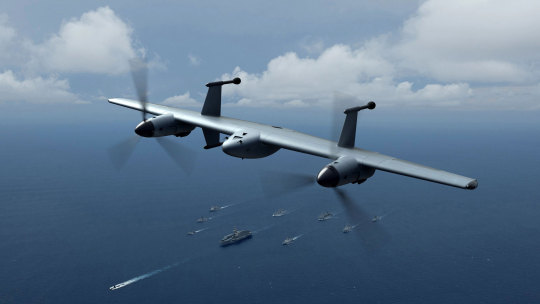
Sikorsky ‘Rotor Blown Wing’ UASFor DARPA Is Almost An All-Wing Unmanned Aircraft
Cool aircraft.
Follow us for more Tech Culture and Lifestyle Stuff.
0 notes
Text
What is a gyroscope used for drone or robot?
A gyroscope is a sensor used to measure angular velocity. Its core function is to sense the rotational motion and attitude changes of an object. It can be applied to various fields that require navigation, positioning or stable control. ER-MG-057, as a high-performance single-axis MEMS gyroscope (angular velocity sensor), has become an ideal choice for many professional fields due to its excellent performance and reliable design. Precise measurement and stable output Wide range: ER-MG-057 has a wide range of measurement up to ±400°/s, which can meet the angular velocity monitoring needs of various dynamic scenes, covering high-speed rotation scenes (such as drone maneuvers and high-speed operation of robotic arms). Excellent stability: tactical-level high precision, zero bias instability as low as 1°/hr, angle random walk (ARW) 0.2°/√hr, 0.1dps ultra-low noise, 200Hz bandwidth combined with 2kHz data output rate, real-time capture of instantaneous angular velocity changes, and response delay of only 2ms. High integration and high reliability Ceramic LCC surface mount package, with airtight packaging to protect the core MEMS structure, is only 11x11x2mm in size, easy to integrate into various systems, and RoHS certified. Supports 5V (4.75~5.25V) power supply, power consumption is only 35mA, with low power consumption, default internal synchronization mode, optional external synchronization, compatible with multi-system architecture. Can work stably in strong shock (12g RMS) and vibration (1000g 5ms 1/2 sine wave) environment, suitable for high vibration scenarios such as aviation drones and unmanned vehicles. Application scenarios Navigation and positioning: suitable for scenarios such as inertial navigation system (INS), drones and autonomous driving. Combined with accelerometers, position, speed and direction are calculated by measuring the angle change and acceleration of movement. Precision instruments and stabilization systems: Ensure precise control and attitude stability of mechanical movement, and improve the real-time and accuracy of target tracking. UAV/aircraft stabilization: Provides data for the flight control system to sense the attitude changes (pitch, roll, yaw) of the aircraft, so that it can adjust the motor speed to keep the aircraft hovering steadily or flying according to instructions. Ship/vehicle stabilization system: Large ships use gyro stabilizers to reduce roll; provide reliable attitude data support for autonomous driving. Robot balance and control: Help robots sense tilt angles and maintain their own balance and motion control.



0 notes
Text
#Fixed-wing VTOL UAV Market Size#Fixed-wing VTOL UAV Market Analysis#Fixed-wing VTOL UAV Market Forecast
0 notes
Text

Ukrainians claim to have destroyed Su-57 at Russian airfield
The Akhtubinsk aviation field would have been hit by long-term drones with a payload of 3 to 4 kg
Fernando Valduga By Fernando Valduga 06/09/2024 - 11:01am Military, War Zones
0
Shares
481
Views
Share on Facebook
Share on Twitter
Ukraine's GRU military intelligence service released satellite images of a drone attack on a Russian aviation field where a Su-57 stealth fighter was allegedly damaged.
"On June 8, 2024, a Su-57 multifunctional fighter from the aggressor state was hit in the Akhtubinsk aviation camp in the Russian region of Astrakhan, 589 kilometers (366 miles) from the contact line," said Ukrainian military intelligence GUR.
However, a more detailed examination of the satellite image shows no sign of damage caused ?? by the attack on the aircraft, but some changes in the objects on the ground around the aircraft in the images taken on June 7 and 8.

Satellite view of the Akhtubinsk airfield.
The attacked site is part of the 929º State Flight Test Center of the Russian Ministry of Defense, which tests new aircraft systems, on-board radars and weapons.
It is highly likely that the damaged aircraft is not a production Su-57 fighter, but its third or ninth T-50 flight prototype, which the center uses. According to published annual photographs of the airfield, the Su-57 aircraft with the number 053 and with the number 510 were based there, the latter being used as a flying laboratory.

Prototype of the T-50 at the Akhtubinsk aviation field in 2023.
Meanwhile, military experts are again raising the theme of building shelters against enemy UAVs in aviation fields. This topic has appeared periodically in the publications of war correspondents and bloggers since the beginning of the special military operation of the Russian Federation in Ukraine.
Despite this, the Russian military command has never taken the necessary measures to protect the aircraft at the airfields. In particular, the famous military blogger Fighterbomber believes that the construction of reliable shelters ?? against attacks by enemy unmanned aircraft would cost the Russian Federation much less than the loss of a Su-57 aircraft.

Anti-drone protection system tested in Russia.
Although the Russian Ministry of Defense did not comment on the damage to the Su-57, the Russian media reported an attack by three long-range drones on the aviation field. Currently, the Russian Aerospace Forces have 22 production Su-57 aircraft, which are actively being used.
A channel speculated that the UAVs could be of the TEKEVER AR3 type of the Ukrainian Armed Forces donated by the United Kingdom.
TEKEVER AR3 drones are small and long-lasting unmanned aerial systems (UAS) designed to support land and sea operations, according to the manufacturer. The drones have a cruising speed of 85 km/h and a communication range of 100 km. They have an autonomy of 16 hours, which means that they can fly several times in a range of 100 km, if placed on a fixed trajectory in radio silence.
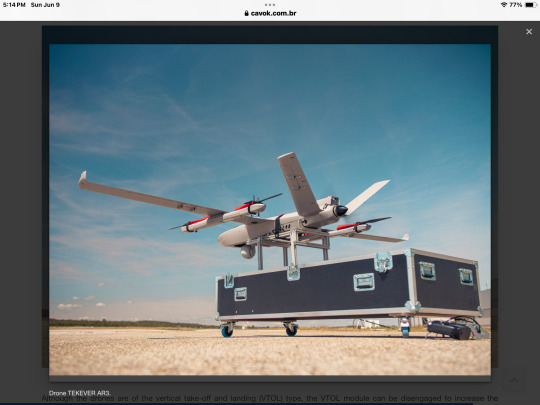
Drone TEKEVER AR3.
Although the drones are of the vertical take-off and landing (VTOL) type, the VTOL module can be disengaged to increase the payload that is set at 4 kg.
If in fact the TEKEVER drones were used ?? in the attack on the Akhtubinsk airfield, then the payload of 3 or 4 kg weapons (a small bomb that detonates with impact) may not have been able to cause much damage to the aviation field and the aircraft based on it, unless the drones fell on the planes directly from above.
Tags: Military AviationSukhoi Su-57 FelonWar Zones - Russia/Ukraine
Sharing
tweet
Fernando Valduga
Fernando Valduga
Aviation photographer and pilot since 1992, he has participated in several events and air operations, such as Cruzex, AirVenture, Dayton Airshow and FIDAE. He has works published in specialized aviation magazines in Brazil and abroad. He uses Canon equipment during his photographic work in the world of aviation.
Related news
MILITARY
Chinese fighters approached a Dutch ship "in an insecure way", says Holland
06/08/2024 - 23:15
HISTORY
IMAGES: South Korea retres F-4 Phantom jets
08/06/2024 - 20:00
MILITARY
Sweden will contribute to NATO Air Policing with Gripen fighters
06/08/2024 - 19:23
MILITARY
IMAGES: Oregon National Air Guard receives first operational Boeing F-15EX
06/08/2024 - 14:33
SMOKE SQUADRON
Smoke Squadron announces its two new pilots
06/08/2024 - 09:27
MILITARY
IMAGE: Swiss Air Force tests highway operations with its F/A-18 Hornet fighters
06/07/2024 - 19:14
Language / Language
pt PT
homeMain PageEditorialsINFORMATIONeventsCooperateSpecialitiesadvertiseabout
Cavok Brazil - Digital Tchê Web Creation
Commercial
Executive
Helicopters
HISTORY
Military
Brazilian Air Force
Space
Specialities
Cavok Brazil - Digital Tchê Web Creation
3 notes
·
View notes
Text
The Global Fixed Wing VTOL UAV Market Size was valued at USD 842 million in 2022 and is estimated to reach USD 4,627 million by 2030, growing at a CAGR of 23.7% during the forecast period. The rise in the adoption of technologically advanced runwayless unmanned aerial military platforms by defense forces is one of the most significant factors projected to drive the growth of the Fixed-wing VTOL UAV Industry. The increasing adoption of fixed-wing VTOL UAVs in various commercial applications, such as monitoring, surveying & mapping, agriculture, aerial remote sensing, and product delivery, is also contributing to the growth of the market.
#Fixed Wing VTOL UAV#Fixed Wing VTOL UAV Market#Fixed Wing VTOL UAV Industry#Global Fixed Wing VTOL UAV Market#Fixed Wing VTOL UAV Market Companies#Fixed Wing VTOL UAV Market Size#Fixed Wing VTOL UAV Market Share#Fixed Wing VTOL UAV Market Growth#Fixed Wing VTOL UAV Market Statistics
0 notes